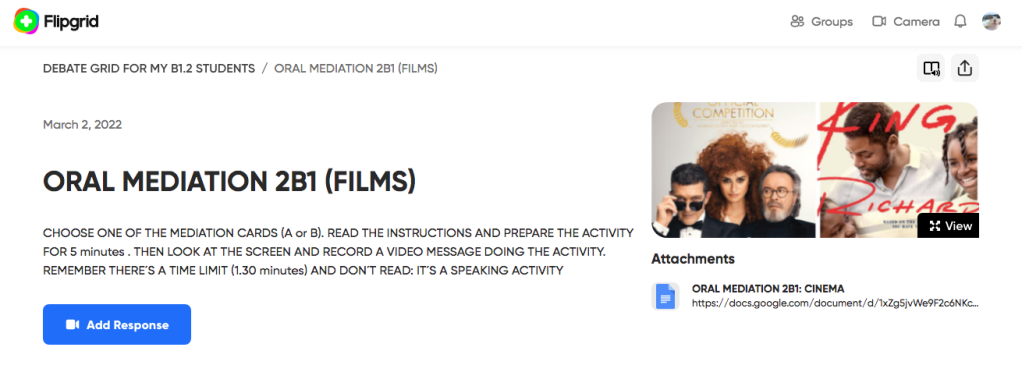“Mediation” is the latest ELT buzzword. You might not know that from this year on you will have to add a new competence (or skill, as they prefer to call it now) to the ones you are already skilled at, I mean, LISTENING, READING, WRITING and SPEAKING. This new skill is MEDIATION. But what is “Mediation”?
Linguistic mediation is a type of interaction that takes place among people that are unable to communicate, when speakers do not speak the same language, or when speakers do speak the same language, but one of them has wider or more specific knowledge of the common language. According to this differentiation, mediation tasks can be bilingual (cross-linguistic or interlinguistic mediation)or monolingual (intralinguistic mediation) , which is the one that will be applied in the Valencian Community Certificate exams.
The Common European Framework of Reference (CEFR) states that linguistic mediation activities take up an important place in our societies, and describes mediation activities as either oral or written, specifying different tasks that can be developed as mediation practice, such as translation, interpretation, paraphrasing, summarizing and note-taking (CEFR 2002: 14-15).
I do not think it is as new as they want to make you think, that’s only to scare you away. You have been mediating all your life, at home with your parents and your children, when you go out with your friends and also in the EOI when
- you are told to do those exercises in which you have to read something and tell your partners what you have read in your own words (written / oral)
- you interview a new partner to get to know him/ her and then you have to introduce him /her to the rest of the class (oral / oral)
- book or film reviews are wanted, etc.. etc…
Maybe the only difference between what you did in the past and what you have to do now is that it will be assessed separately and not as an integrated skill (oral / written)





















